Abstract
The sera of 23% of HBe antigen positive patients with chronic hepatitis are HBV-DNA polymerase negative. These patients are probably undergoing spontaneous seroconversion from a state of high to low viral replication and do not require antiviral therapy. In chronic HBV infection rapid changes in viral replication as a result of antiviral therapy are reflected by changes in HBV-DNA and HBV-DNA polymerase but not by changes in HBe antigen concentrations. Disappearance of HBe antigen from serum may be delayed for 180 days after permanent inhibition of HBV replication with adenine arabinoside or its monophosphate derivative.
Full text
PDF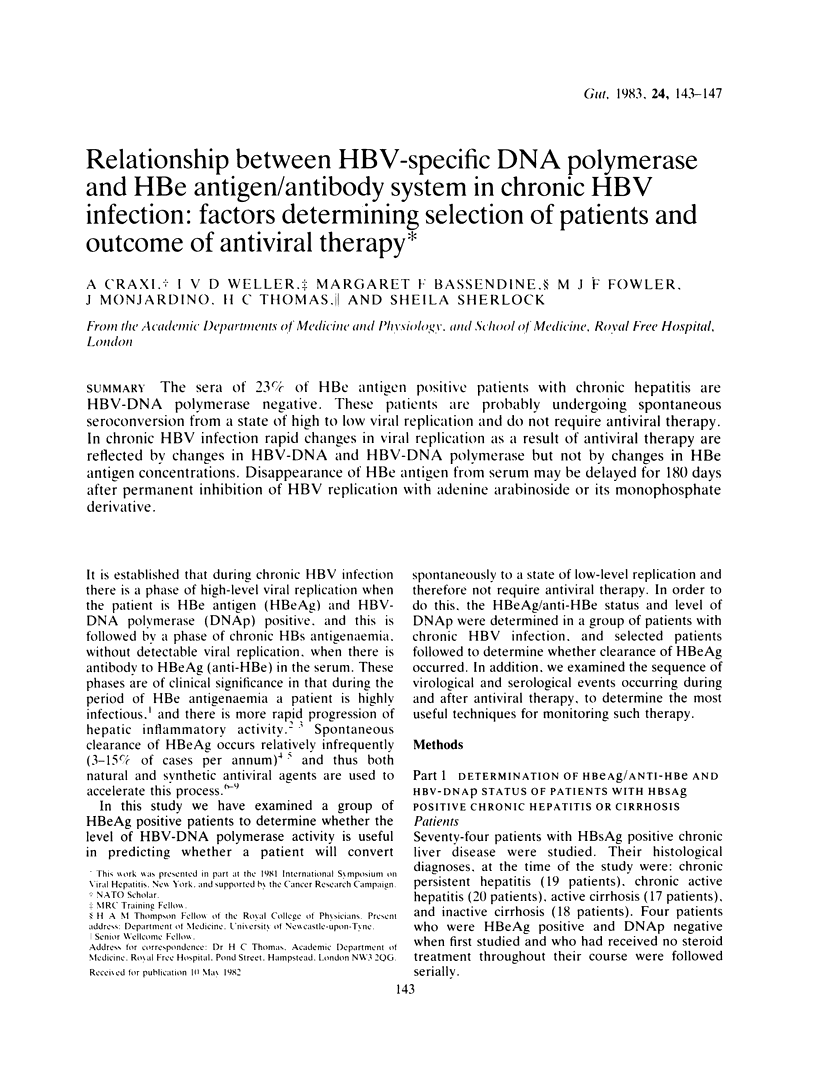
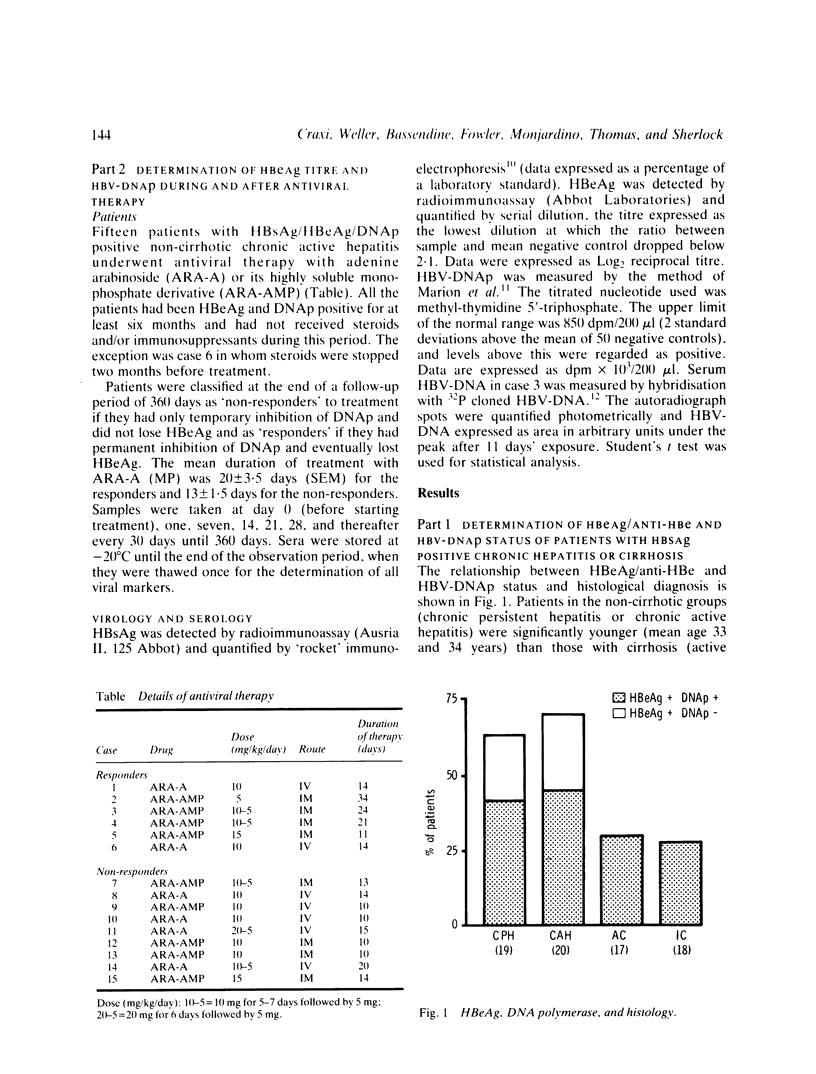
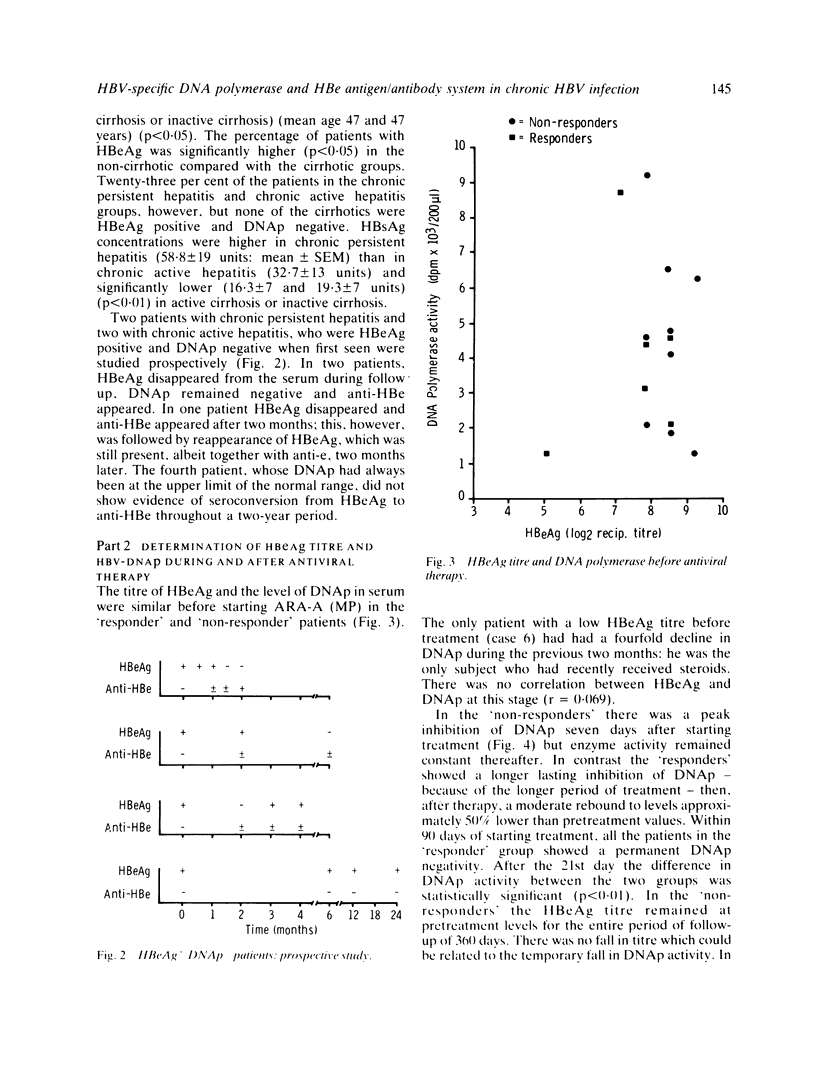
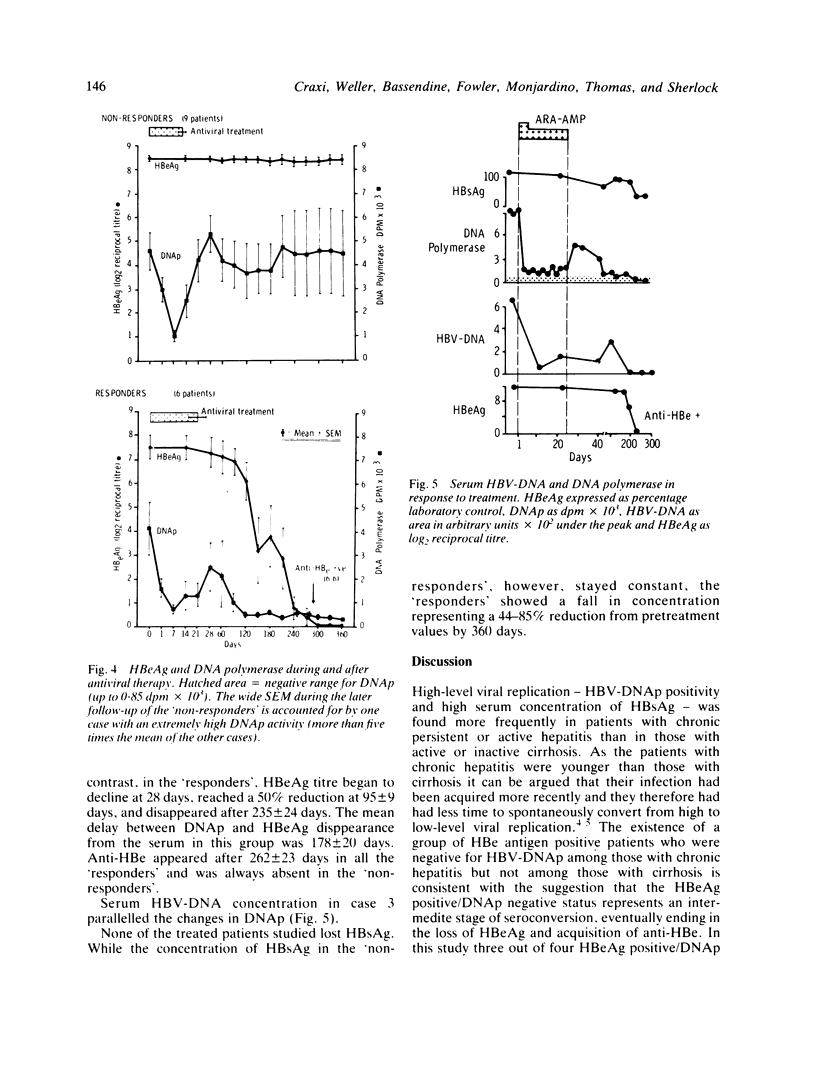
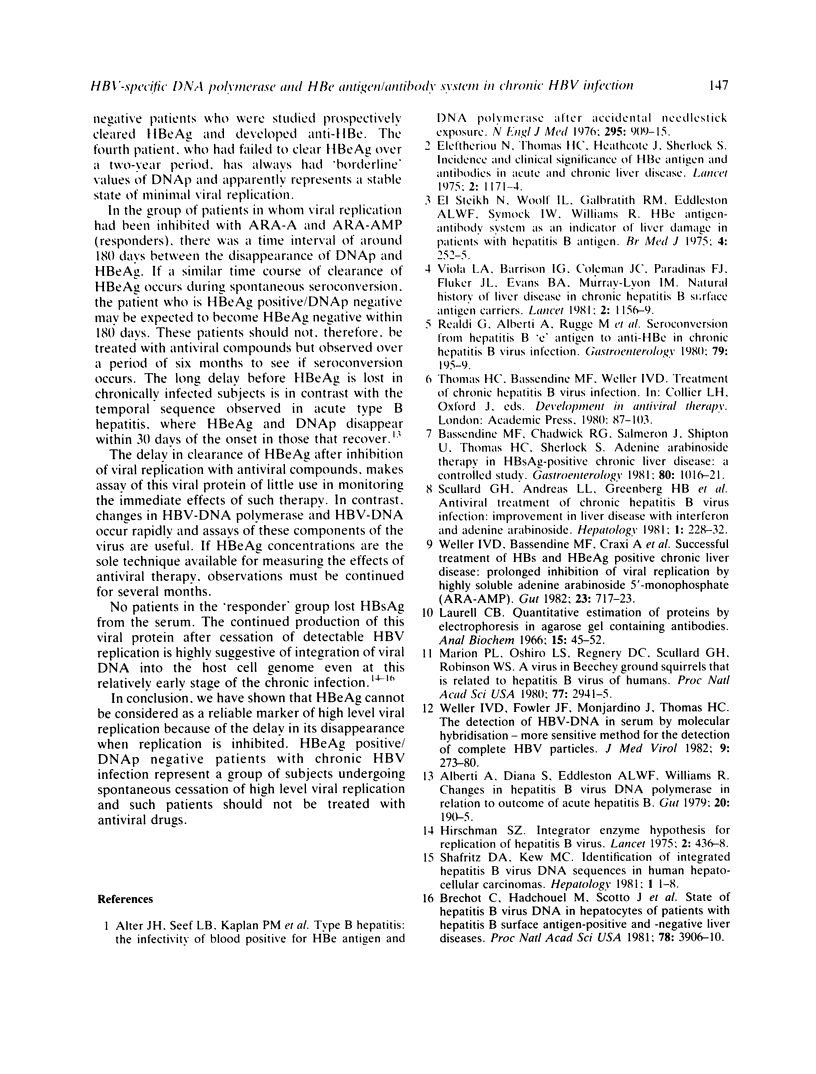
Selected References
These references are in PubMed. This may not be the complete list of references from this article.
- Bassendine M. F., Chadwick R. G., Salmeron J., Shipton U., Thomas H. C., Sherlock S. Adenine arabinoside therapy in HBsAg-positive chronic liver disease: a controlled study. Gastroenterology. 1981 May;80(5 Pt 1):1016–1022. [PubMed] [Google Scholar]
- Bréchot C., Hadchouel M., Scotto J., Fonck M., Potet F., Vyas G. N., Tiollais P. State of hepatitis B virus DNA in hepatocytes of patients with hepatitis B surface antigen-positive and -negative liver diseases. Proc Natl Acad Sci U S A. 1981 Jun;78(6):3906–3910. doi: 10.1073/pnas.78.6.3906. [DOI] [PMC free article] [PubMed] [Google Scholar]
- Eleftheriou N., Thomas H. C., Heathcote J., Sherlock S. Incidence and clinical significance of e antigen and antibody in acute and chronic liver disease. Lancet. 1975 Dec 13;2(7946):1171–1173. doi: 10.1016/s0140-6736(75)92657-4. [DOI] [PubMed] [Google Scholar]
- Hirschman S. Z. Integrator enzyme hypothesis for replication of hepatitis-B virus. Lancet. 1975 Sep 6;2(7932):436–438. doi: 10.1016/s0140-6736(75)90847-8. [DOI] [PubMed] [Google Scholar]
- Laurell C. B. Quantitative estimation of proteins by electrophoresis in agarose gel containing antibodies. Anal Biochem. 1966 Apr;15(1):45–52. doi: 10.1016/0003-2697(66)90246-6. [DOI] [PubMed] [Google Scholar]
- Marion P. L., Oshiro L. S., Regnery D. C., Scullard G. H., Robinson W. S. A virus in Beechey ground squirrels that is related to hepatitis B virus of humans. Proc Natl Acad Sci U S A. 1980 May;77(5):2941–2945. doi: 10.1073/pnas.77.5.2941. [DOI] [PMC free article] [PubMed] [Google Scholar]
- Weller I. V., Bassendine M. F., Craxi A., Fowler M. J., Monjardino J., Thomas H. C., Sherlock S. Successful treatment of HBs and HBeAg positive chronic liver disease: prolonged inhibition of viral replication by highly soluble adenine arabinoside 5'-monophosphate (ARA-AMP). Gut. 1982 Sep;23(9):717–723. doi: 10.1136/gut.23.9.717. [DOI] [PMC free article] [PubMed] [Google Scholar]
- Weller I. V., Fowler M. J., Monjardino J., Thomas H. C. The detection of HBV-DNA in serum by molecular hybridisation: a more sensitive method for the detection of complete HBV particles. J Med Virol. 1982;9(4):273–280. doi: 10.1002/jmv.1890090405. [DOI] [PubMed] [Google Scholar]


